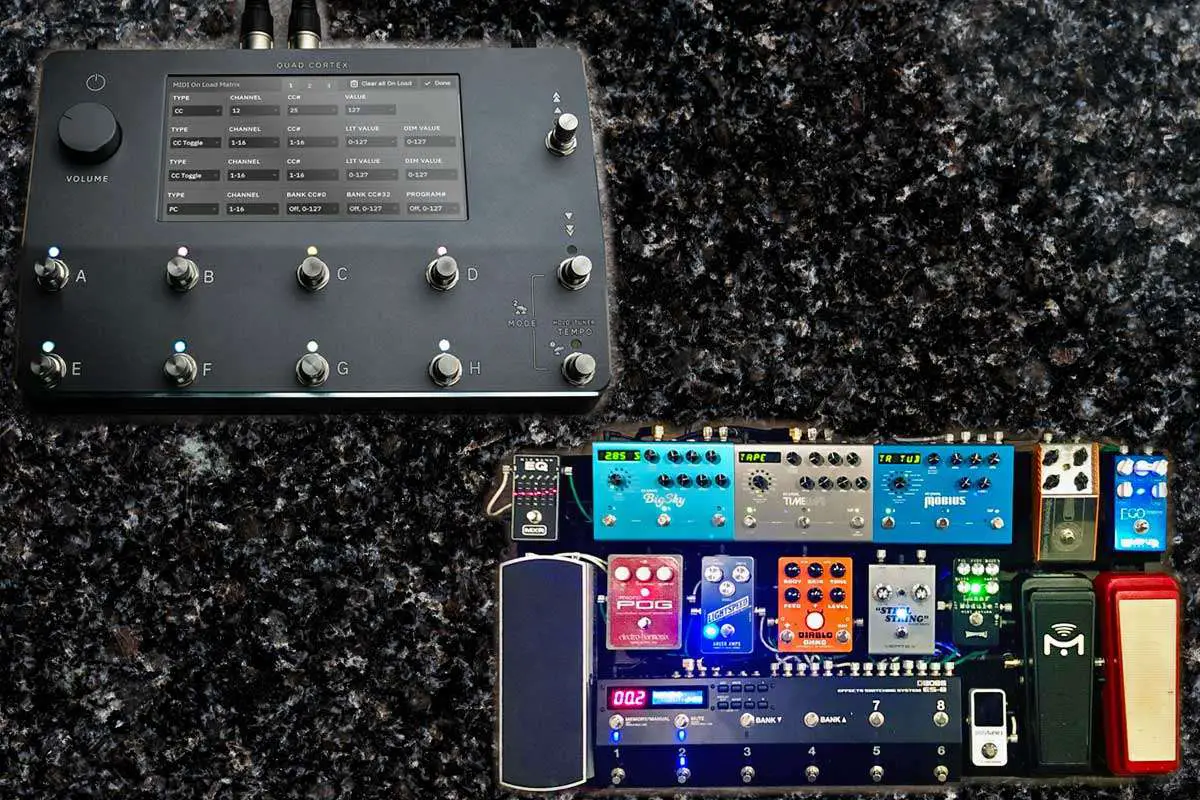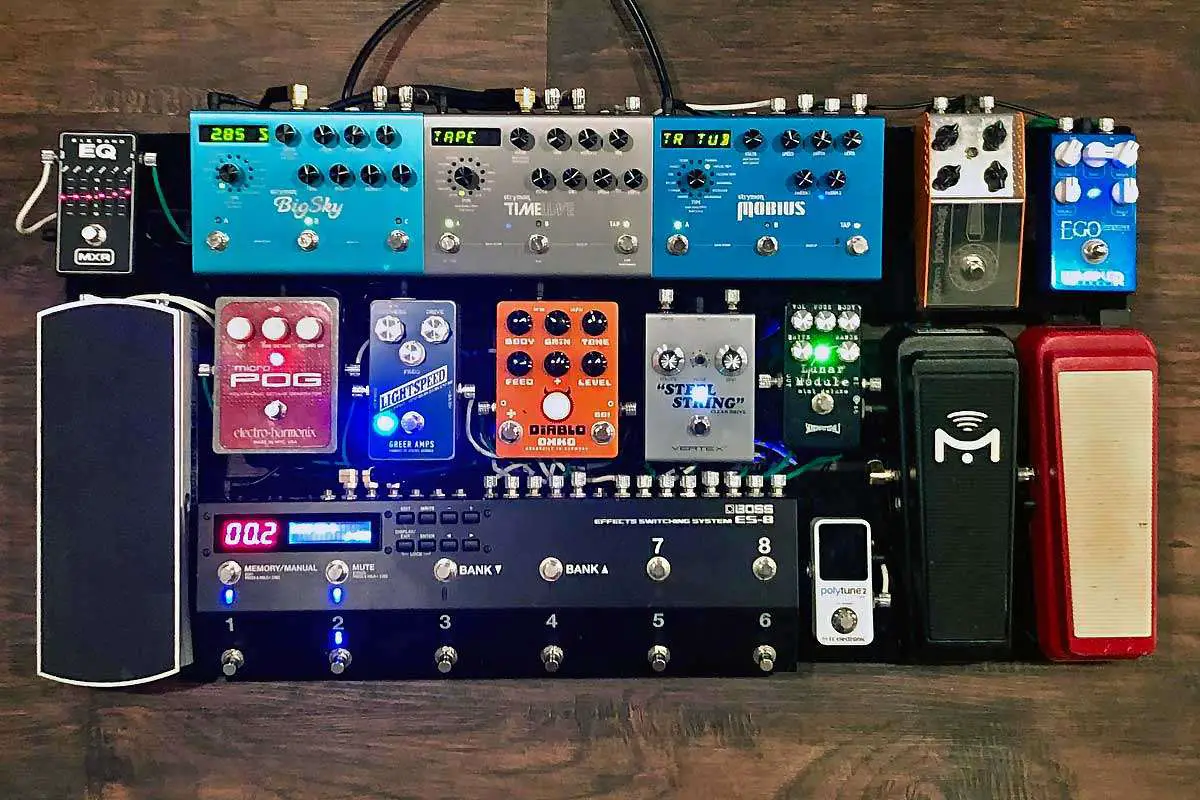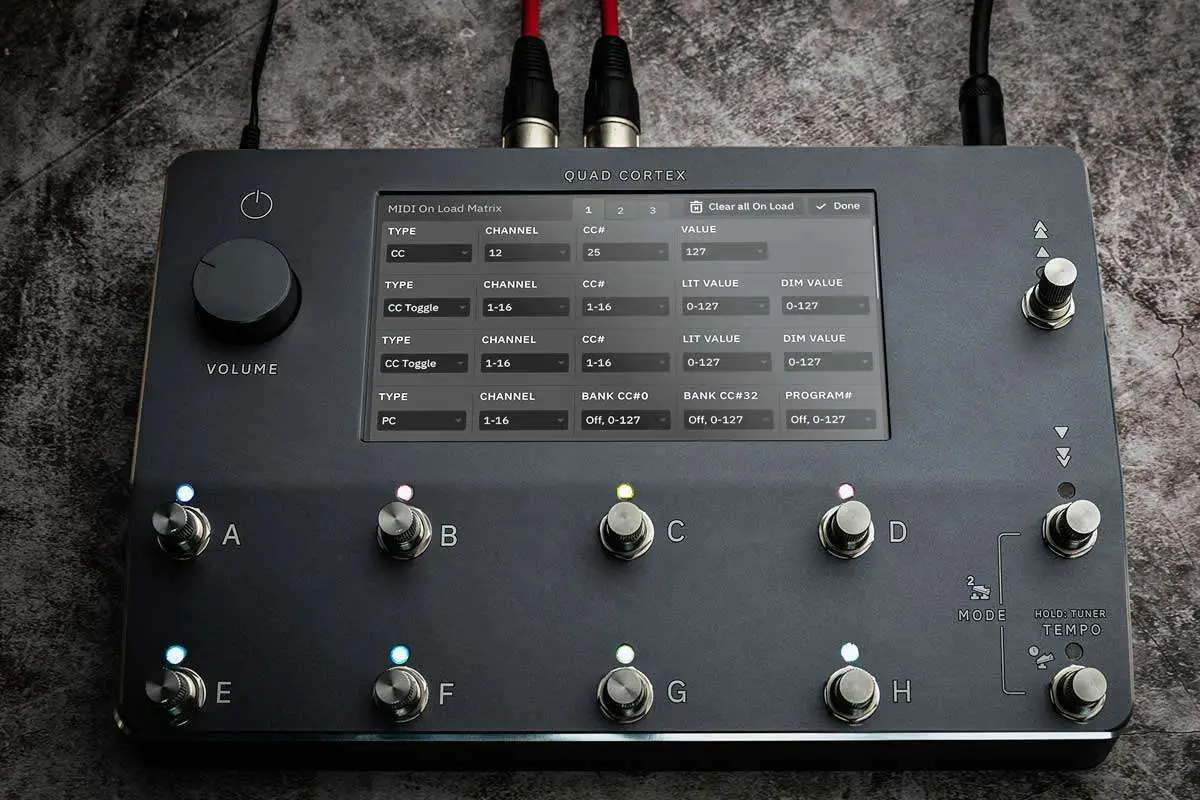In navigating the realm of guitar effects, you’re often faced with a choice between the classic pedalboard vs multi effects of more modern FX units. A pedalboard is a collection of individually chosen effects pedals, which allows you to mix and match your stompboxes to create a distinctive sound palette. These pedals can be arranged in any order you desire, offering a tactile and highly customizable experience. In contrast, a multi-effects unit is an all-in-one device that provides a wide range of effects and sometimes amp modeling in a single, often more portable, package.
Choosing between a pedalboard and a multi-effects unit depends largely on your needs and preferences. A pedalboard provides you with the flexibility to handpick each effect, tailoring your rig with unique sounds and the ability to adjust parameters on the fly during a performance. It encourages experimentation, leading to a sound that is uniquely yours. However, building a pedalboard can become expensive and requires a good understanding of signal chains and the effect each pedal has on your tone.
On the other hand, a multi-effects unit is generally more cost-effective and can be ideal when convenience and space-saving are priorities. These units are pre-programmed with an array of effects and presets, making them a practical choice for beginners or those who need a variety of sounds without the hassle of managing multiple pedals. Although they may lack some of the nuanced control offered by individual pedals, advancements in technology have significantly improved their sound quality and versatility.
Related: Some of the best multi-effect boards

Understanding Pedalboards
When delving into pedalboards, you should be aware that they are an integral part of shaping your guitar sound. Each pedal serves a specific purpose, and how you arrange them can significantly affect your tone.

Types of Pedals and Their Effects
Pedals fall into various categories based on the effects they produce. Gain-based pedals, such as overdrives, distortions, and fuzzes, shape the amplitude of your signal, adding warmth, grit, or aggressive saturation, respectively. On the other hand, modulation effects like chorus, flanger, and phaser alter the frequency or phase of your signal creating depth and movement. These pedals allow for a wide array of sound textures that can define your musical voice.
Signal Chain and Pedal Arrangement
Your signal chain—the order in which pedals are connected—plays a critical role in how effects interact with each other. Typically, you would place gain-based pedals early in the chain to drive the signal, while modulation effects and delay come later to modulate the already shaped signal. It’s important to experiment with the arrangement of your pedals as changes can lead to discovering your unique sound. Remember to use quality cables and a reliable power supply to ensure noise-free and consistent operation.
The Role of Analog Circuits in Tone
Analog circuits in pedals are celebrated for their warm, natural sound and tactile response. Unlike digital counterparts, analog pedals such as overdrives and distortions use electrical components to create their effect, often resulting in more harmonically rich tones. The simplicity of analog can also translate into ease of use, with a straightforward set of controls that directly manipulate the sound.
Multi-Effects Units Explored
Multi-effects units offer a compact solution, harnessing the potency of multiple pedals in one device. Effortless recall of countless sounds, precise digital control, and diverse functionality distinguish these units from their single-effect counterparts.

Advantages of Digital Processing
Your multi-effects pedal serves as a powerhouse of digital processing, providing real-time audio manipulation with unparalleled precision. Flexibility is at your command, as you can tweak numerous parameters to sculpt your ideal sound. The digital nature of these units not only yields a vast array of effects but also saves physical space and prevents signal degradation that can occur with multiple single pedals in a chain.
The Convenience of Presets and Modeling
Imagine having a myriad of iconic amp sounds and effects at your fingertips—this is where the multi-effects pedal truly shines. Presets allow you to switch between complex setups instantaneously, ideal for live performances where time is of the essence. Modeling capabilities go further, emulating the nuance and warmth of classic gear. Whether it is overdrive, chorus, or delay, these units can model each effect in a multitude of styles and brands, expanding your sonic palette.
Navigating Controls and User Interfaces
Navigating your multi-effects pedal is made intuitive with thoughtfully designed user interfaces. Touchscreen displays guide you through customization with ease, while traditional knobs mirror the tactile feel of single pedals. A clear display typically outlines your settings and signal chain, letting you adjust on the fly without diving into complex menus. For recording enthusiasts, these devices can double as an audio interface, streamlining your home studio setup.
Comparing Pedalboards and Multi-Effects
When you’re choosing between pedalboards and multi-effects units, consider how they differ in sound quality, versatility, cost, ease of use during live performances, and overall value.
Evaluating Sound Quality and Versatility
Pedalboards: You have the freedom to mix and match various stompboxes, which can include specialized delays, reverbs, and chorus effects, creating a unique sound that’s entirely yours. The trade-off is that achieving high-quality sound with a pedalboard often means investing in several high-end pedals.
Multi-Effects: These come pre-loaded with a vast array of effects and amp modeling capabilities, generally offering good versatility. However, some argue that multi-effects units may not always replicate the nuanced tone of individual pedals as accurately, especially in the case of overdrive and distortion.
Cost-Efficiency and Value for Money
Pedalboards: Assembling a pedalboard can quickly become costly, with each high-quality pedal adding to the expense. But for your investment, you get tailored guitar tones and the potential for higher resale value for individual pedals.
Multi-Effects: Often providing value for money, a budget multi-effects processor packs many effects into one unit at a price often lower than a collection of individual pedals. This can be a cost-effective solution for those on a tighter budget, or for beginners looking to explore a range of sounds.
Convenience for Live Performance and Gigging
Pedalboards: They offer tactile control over each effect, which can be advantageous during live performances. But this setup requires significant setup time and there’s potential for disconnection issues between pedals.
Multi-Effects: These units are generally easier to transport and set up, with presets allowing you to switch between settings quickly. The downside is that they usually rely on menu navigation, which can be less convenient in a live setting if you need to tweak your sound on the fly. Additionally, units with an expression pedal can offer more dynamic control similar to a traditional pedalboard.
By considering these aspects—sound quality, value, and convenience—you can make a well-informed decision that suits your musical needs and preferences.
Selecting the Right Gear for You
When embarking on the journey to find the perfect balance of tone and versatility for your guitar setup, whether you opt for a traditional pedalboard or a multi-effects unit is a significant decision. Your playing style, performance needs, and preference for digital or analog gear will all play a role in what will suit you the best.
Tips for Beginners and Seasoned Musicians
- Beginners: Starting with a multi-effects pedal like the Zoom 505 can be beneficial. Its user-friendly interface and preset options allow you to explore a vast range of sounds without the need for multiple individual pedals. A compact unit can simplify your experience and make it easy to set up.
- Seasoned Musicians: If you’re looking to carve out a unique sound, modular pedalboards enable you to handpick individual pedals with specific characteristics. High-end units like the Kemper, Axe-Fx, or Neural DSP Quad Cortex offer advanced sound tweaking possibilities that a traditional multi-effects unit might not provide.
Integrating Devices with Current Setups
- Traditional Pedalboard Enthusiasts: For those who have an existing board, adding a multi-effects pedal, like the Line 6 Helix LT or Boss GT-1000, could add versatility. These devices can function as the centerpiece of your rig, or act as one piece in your larger pedal ecosystem.
- Compact Multi-effects Advocates: Should you lean towards units like the Boss GX-100 for their simplicity and power, integrating them with your guitar amp might be a concern. Make sure to investigate how these units interact with various amps to ensure compatibility and to take full advantage of their capabilities.
Whether you’re just starting your musical journey or you’re a veteran looking to refine their sound, understanding the pros and cons of each type of gear is essential. Pedalboards offer the freedom to swap out pedals and tweak settings on the fly, but can come with the limitation of a more complex setup. Multi-effects units provide tons of effects in a compact format, though they may sometimes offer too many options that can overwhelm beginners. Evaluate your needs, research your options, and trust in your decision to find the right gear for your musical expression.
